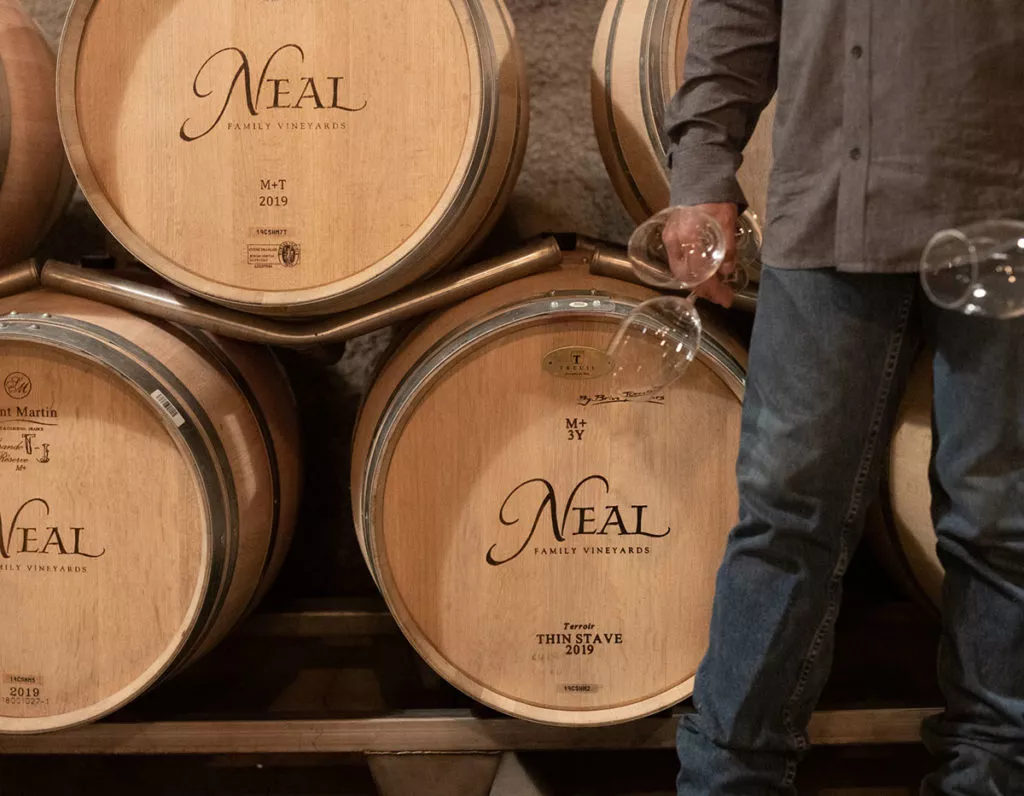It’s the time of the year when winemakers assess the type of barrels to procure for the upcoming vintages.

As winemaking styles differ from winery to winery, barrel selections also vary. Like all other variables in the winemaking process, barrels are intricate and require winemakers to consider the specifications of the various barrel factors- design, materials, size, tightness of grain, length and intensity of toasting among others.
Representatives from different cooperages visit our cave to taste through different wines in specific barrels. One French Oak barrel could show more floral notes, and round, smooth tannins compared to another which could exhibit more caramel or biscuit characteristics. Winemakers are trained to hone in on these intricate details, which can change the direction of the wine. The cooperage representatives make their own suggestions and enlighten the winemakers of current trends. In simple terms, selecting and buying wine barrels comes with great responsibility and collaboration.
These oblong vessels were once used simply for storage and ease of transportation. Barrels are now a crucial component of the fine wine world. Wood barrels are used because:
- They impart incredible flavors and aromatics to the wine (vanilla, clove, citrus, caramel, toast, etc).
- They allow micro-dosing of oxygen as they age (wines become smoother over time).
- They allow a suitable environment for wines to undergo Malolactic fermentation, resulting in creamier, rounder wines.
- Oak was particularly desired for its unique structure that prevents leakage.
There are two primary species of oak preferred for winemaking — American White Oak and European White Oak. However, just like wine grapes, the environment of the trees’ growing region impacts the aromas and flavors of the oak. So, most wine barrel conversations begin with forest location. Most of Napa Valley’s barrels are sourced from France due to the favored aromatic and flavor combinations of French oak with Cabernet Sauvignon. There are wineries using American, Hungarian, and Acacia oak as well, but these are not as favored as French Oak.
New French Oak (NFO) is one of the major annual investments for wineries. One 225L barrique barrel ranges in price from $700 to $1,200. Yielding 25 cases per barrel, each one adds $3-6 in raw material cost per bottle of wine (assuming that wine is 100% new oak). Just like a tea bag, a new barrel loses its aromatics and flavors after one use, which is why wineries incur this cost each year. Keeping barrels clean and sanitized, as well as managing their usage, are crucial components of the winemakers’ duties. For Napa winemakers, typical barrel usage is capped at five years, because they are buying so many new barrels for each vintage. Afterwards, barrels are sold to breweries, distilleries, and the general public at reduced prices.
Before winemakers decide which barrels to purchase, winemakers must determine the quantity of the barrels needed for the vintage. Depending on the style of wine, varietals, and growing region – (which affect body, tannin, color, acidity, and aromatics), winemakers decide a general ratio of NFO and used French Oak to use for the upcoming vintage.
These oblong vessels were once used simply for storage and ease of transportation. Barrels are now a crucial component of the fine wine world. Wood barrels are used because:
These are the considerations when purchasing NFO:
Cooperage
Every wine selects their preferred cooperage(s) to impart different styles on their wine. Those cooperages that are highly desirable (the “Rolls Royces” of barrels) oftentimes will have waiting lists.
Forest
The forest location impacts aromatics, tightness of the grain, and barrel tannin. One forest can be ideal for white wine barrels while others are favored for deep Cabernet Sauvignons.
Grain Tightness
Many cooperages now favor emphasizing the tightness of the grain over the forest(s) from which the oak is derived. Even while designating the forest, wineries may pay a premium for tighter grain.
Size
The larger the barrel, the less oak influence on the wine; plus, in theory, the smaller surface area (relative to volume) can reduce the drying effect of oxidation.
Seasoning
Seasoned wood are staves left to dry after being cut. The longer they “season,” the more aromatics and barrel tannins are leached out. Most wineries use 24 or 36 month wood.
Toast
While standard toast levels include light, medium, medium+, and heavy, each cooperage is different — one brand’s medium toast could be another’s light toast. Will this oak complement my wine? Will it bring out more floral aromatic notes? Do I want more caramel?
Long Toasting
Long, slow toasting, a recent trend, seems to help bring out more delicate, floral notes of the wine without overpowering. Average toasting of the oak is 30-40 minutes. Long toasting is 60 minutes.
Toasted Heads
The ends of the barrels can also be toasted or left untoasted, which can have a dramatic effect on the wine.
Closed or Open
A recent trend involves toasting a barrel with an open head, compared to the traditional method of toasting it with a closed barrel environment, which will capture certain aromatics.
Stave Thickness
This has been a controversial topic, as many winemakers question its impact. Some believe that thicker staves slow the rate of oxidation. Other winemakers prefer thinner staves, joking that they are simply easier to move.
These considerations are just a glimpse of the detail and analysis that goes into procuring barrels. Winemakers’ oak preferences and their choice’s impact are certainly indicative of the artistry of the winemaking.
For a look at how barrels are made, here is a video from Seguin Moreau Cooperage on Making an Oak Wine Barrel
